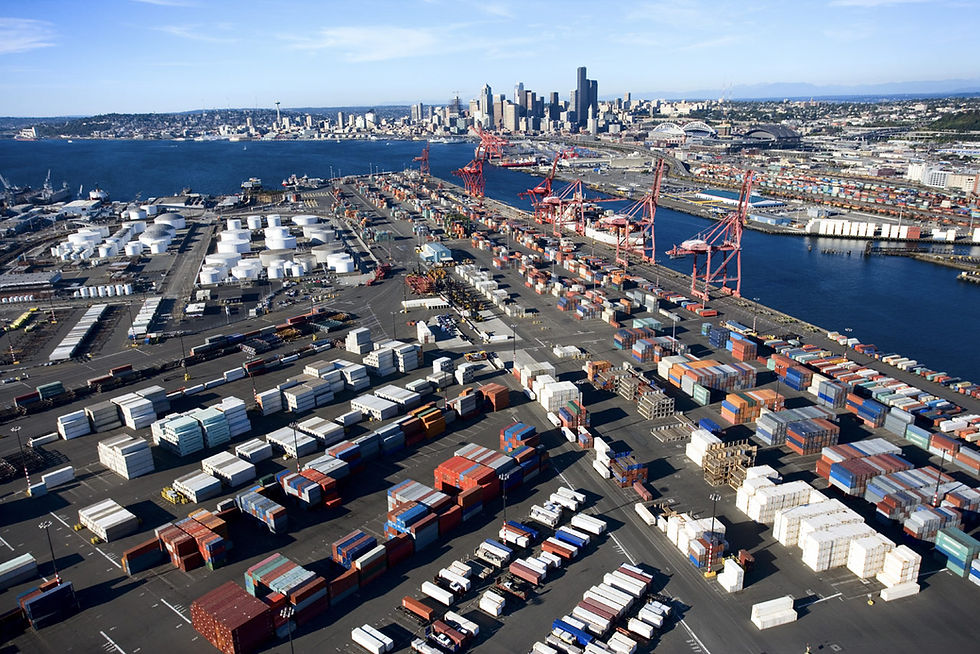[https://www.forbes.com/sites/forbesrealestatecouncil/2020/04/17/florida-industrial-real-estate-markets-react-to-supply-chain-challenges/#6751330c5656] - Written By David Murphy
From The Tenant Perspective

Industrial clients are weighing their options. While a few tenants are proactively seeking short-term rental abatement, demand for Florida industrial real estate is still strong. It surprises some of my colleagues in other states that we are still actively conducting tours (while adhering to social distancing guidelines) and generating new leasing opportunities. There are divergent forces impacting our market.
Positive forces on the Florida industrial market from the occupier perspective include:
• Supply chain networks are still reacting to consumers’ demand to receive their e-commerce purchases in a window of two hours to two days.
• This acceleration of product movement has required users to establish a Florida-based supply chain model, with the hub of the distribution model typically located in Central Florida.
• Many industrial users view this crisis as a temporary problem and that the fundamental changes impacting the supply chain (more product stored closer to the consumer) are a net-positive for tenant demand in the long-term.
Negative impacts on tenant demand include:
• The uncertainty of the duration and economic impact of the pandemic are creating uncertainty among tenants in the short-term.
• It is difficult to schedule property tours.
• Companies that cater to the hospitality/tourism and convention services industries will continue to see near-term pressure.
From The Landlord’s Perspective
Florida has benefitted dramatically from the shift in industrial occupiers’ supply chain network in recent years. Not so long ago, consumers would order product through a catalog or infomercial and be content with receiving their order in one to two weeks. Using that model, a supplier would service Florida through a hub-and-spoke model with Atlanta being the hub (regional distribution center in the 300,000- to 1,000,000-square-foot range) and the major Florida markets being spokes (typically 50,000- to 100,000-square-foot local distribution centers.)
With e-commerce and same-day delivery proliferating the market, industrial users have had to radically change their distribution model. Today’s Florida supply chain network has emerged as a “to Florida, from Florida” regional distribution center typically situated along the Interstate 4 corridor between Orlando and Tampa, with smaller “last-mile” distribution centers in more locations scattered around population centers across the state.
Current Trends Seen By Landlords
• Active discussions with tenants requesting short-term rental abatement.
• Continued interest in expanding Florida’s industrial footprint — the long-term forecast for industrial is net-positive after dealing with the short-term pain of the virus-induced economic contraction.
• Marketing and showings of space are moving to a virtual format due to social distancing.
• New issues have emerged, including delays in permitting, postponement of zoning hearings, etc., which could temporarily slow delivery of new supply.
The View Of The Florida Industrial Sector From The Capital Markets Perspective
While actively marketing several large income-producing industrial portfolios, there has been little decrease in investor demand and most astute buyers are desperately trying to add industrial inventory to their balance sheet. We have not seen any significant re-trading, and there are many more industrial real estate buyers than sellers in this environment. The common stumbling blocks for buyers are scheduling due diligence vendors and tours of the product during a quarantine environment.
Emerging Trends For Florida Industrial Space In The Post-Pandemic Market
Industrial owners and developers I have spoken with remain very confident in the long-term viability of the Florida industrial market. Population growth, job growth and the shifting supply chain is all driving significant demand for new industrial product. Few industrial markets in the U.S. have benefitted from e-commerce more than Florida due to the high population concentration and the difficulty in distributing to a peninsula that is requiring more warehouses to be situated closer to the consumer.
In addition to traditional e-commerce sales, the online food market has taken off. According to Adobe’s Digital Economy Index:
• E-commerce sales are up 25%.
• Grocery now represents 8% of overall e-commerce transactions, up from 6% three years ago.
• Toilet paper sales are up 231%.
• Home fitness equipment sales, including dumbells, kettlebells, stationary bikes and treadmills, are up 55%.
• Electronics sales are up and represent 16% of online sales.
• Home and garden represent 12% of online sales.
• There’s been a 62% increase in products purchased online and picked up in-store.
The impact of this crisis on the Florida industrial market remains highly fluid and it is clearly too early to tell what the long-term impacts will be. However, most of the market participants I’ve communicated with have indicated that the long prognosis is for a return to the robust demand that has established Florida as one of the most sought-after industrial markets in the country.
In the long-term, current market conditions are only magnifying the shifts we were already seeing in the Florida supply chain:
• Increased product storage to smooth out any short-term shocks to the supply chain.
• More warehouse space being occupied closer to the end user.
• Manufacturing moving back to the United States.
• More demand for food distribution space.
While we are all waiting to determine the impact of a black swan event on the overall industrial market, I believe Florida will eventually recover and the emerging trends outlined above will bode well for the Florida industrial real estate sector.
















